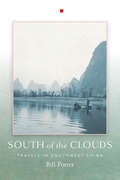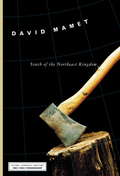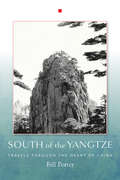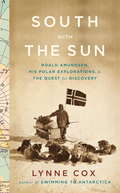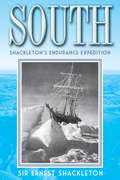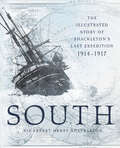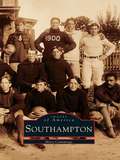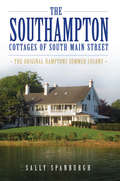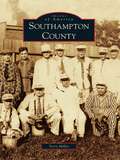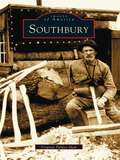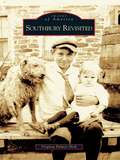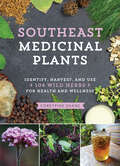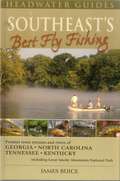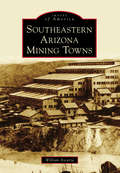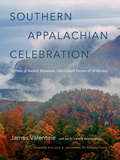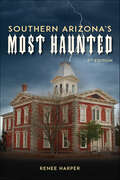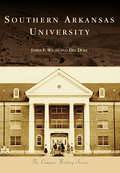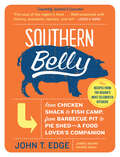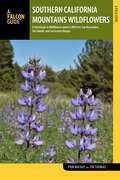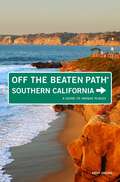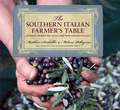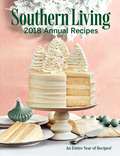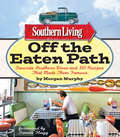- Table View
- List View
South of the Clouds: Travels in Southwest China
by Bill PorterWhile flipping through the atlas of Chang Ch'i-yun, one of China's most famous geographers, distinguished translator Bill Porter (Red Pine) developed a curiosity about the southwestern province of China. Dubbed Yun-nan, "South of the Clouds," this was the last area modern China to come under Chinese control. Originally conquered by the Mongols and eventually introduced to foreigners as a vibrant setting for trade, Yun-nan became a critical crossroad connecting East and West. In 1992, Porter left his home in Hong Kong to tour the small towns and major cities of Yun-nan, studying each of their local cultures and larger impacts on the trajectory of Chinese history. Here, he shares his encyclopedic knowledge of the nation's beautiful legacy while introducing new insight about the province's landscapes, people, and recent state of affairs. He visited Bulang Mountain, where the local people had no written language of their own, so they sent their children to live as monks in nearby Tai temples to learn Tai script. He saw women in Lijiang who wore traditional sheepskin jackets that bore seven frogeyes without clear explanation. In Dali, a small town turned urban center, he recalls a massive museum built to show off the city's new wealth, only to have half of its halls left empty and unvisited.The first of a series of three China travel memoirs to be published by Soft Skull, Bill Porter's book tells the incredible story of a spread of land with a thousand years of human history. His remarkable insight and unparalleled understanding of China place this book at the forefront of East Asian travel literature.
South of the Northeast Kingdom
by David MametCompared to some of its New England neighbors, Vermont has seemed to long-time resident David Mamet a place of intrinsic energy and progressiveness, love and commonality. It has lived up to the old story that settlers came up the Connecticut River and turned right to get to New Hampshire and left to get to Vermont. Is Vermont's tradition of live and let live an accident of geography, the happy by-product of 200 years of national neglect, an emanation of its Scots-Irish regional character? Exploring the ways in which his decades in Vermont have shaped his character and his work, Mamet examines each of these strands and how the state's free-thinking tradition can survive in an age of increasing conglomeration. The result is a highly personal and compelling portrait of a truly unique place.
South of the Northeast Kingdom
by David MametCompared to some of its New England neighbors, Vermont has seemed to long-time resident David Mamet a place of intrinsic energy and progressiveness, love and commonality. It has lived up to the old story that settlers came up the Connecticut River and turned right to get to New Hampshire and left to get to Vermont. Is Vermont's tradition of live and let live an accident of geography, the happy by-product of 200 years of national neglect, an emanation of its Scots-Irish regional character? Exploring the ways in which his decades in Vermont have shaped his character and his work, Mamet examines each of these strands and how the state's free-thinking tradition can survive in an age of increasing conglomeration. The result is a highly personal and compelling portrait of a truly unique place.
South of the Yangtze: Travels Through the Heart of China
by Bill PorterChinese civilization first developed 5,000 years ago in North China along the middle and lower reaches of the Yellow River. And the Yellow River remained the center of Chinese civilization for the next 4,000 years. Then a thousand years ago, this changed. A thousand years ago, the center of Chinese civilization moved to the Yangtze. And the Yangtze, not the Yellow River, has remained the center of its civilization. A thousand years ago, the Chinese came up with a name for this new center of its civilization. They called it Chiangnan, meaning "South of the River," the river in question, of course, being the Yangtze. The Chinese still call this region Chiangnan. Nowadays it includes the northern parts of Chekiang and Kiangsi provinces and the southern parts of Anhui and Kiangsu. And some would even add the northern part of Hunan. But it's not just a region on the map. It's a region in the Chinese spirit. It's hard to put it into words. Ask a dozen Chinese what "Chiangnan" means, and they'll give you a dozen different answers. For some the word conjures forests of pine and bamboo. For others, they envision hillsides of tea, or terraces of rice, or lakes of lotuses and fish. Or they might imagine Zen monasteries, or Taoist temples, or artfully-constructed gardens, or mist-shrouded peaks. Oddly enough, no one ever mentions the region's cities, which include some of the largest in the world. Somehow, whatever else it might mean to people, Chiangnan means a landscape, a landscape and a culture defined by mist, a landscape and a culture that lacks the harder edges of the arid North.In the Fall of 1991, Bill Porter decided to travel through this vaporous land, following the old post roads that still connected its administrative centers and scenic wonders, its most famous hometowns and graves, its factories and breweries, its dreamlike memories and its mist, and he was joined on this journey by his poet and photographer friends, Finn Wilcox and Steve Johnson. South of the Yangtze is a record in words and black and white images of their trip.
South with the Sun: Roald Amundsen, His Polar Explorations, and the Quest for Discovery
by Lynne CoxRoald Amundsen, "the last of the Vikings," left his mark on the Heroic Era as one of the most successful polar explorers ever. A powerfully built man more than six feet tall, Amundsen's career of adventure began at the age of fifteen (he was born in Norway in 1872 to a family of merchant sea captains and rich ship owners); twenty-five years later he was the first man to reach both the North and South Poles.Lynne Cox, adventurer and swimmer, author of Swimming to Antarctica ("gripping" --Sports Illustrated) and Grayson ("wondrous, and unforgettable" --Carl Hiaasen), gives us in South with the Sun a full-scale account of the explorer's life and expeditions.We see Amundsen, in 1903-06, the first to travel the Northwest Passage between the Atlantic and Pacific Oceans, in his small ship Gjøa, a seventy-foot refitted former herring boat powered by sails and a thirteen-horsepower engine, making his way through the entire length of the treacherous ice bound route, between the northern Canadian mainland and Canada's Arctic islands, from Greenland across Baffin Bay, between the Canadian islands, across the top of Alaska into the Bering Strait. The dangerous journey took three years to complete, as Amundsen, his crew, and six sled dogs waited while the frozen sea around them thawed sufficiently to allow for navigation. We see him journey toward the North Pole in Fridtjof Nansen's famous Fram, until word reached his expedition party of Robert Peary's successful arrival at the North Pole. Amundsen then set out on a secret expedition to the Antarctic, and we follow him through his heroic capture of the South Pole. Cox makes clear why Amundsen succeeded in his quests where other adventurer-explorers failed, and how his methodical preparation and willingness to take calculated risks revealed both the spirit of the man and the way to complete one triumphant journey after another. Crucial to Amundsen's success in reaching the South Pole was his use of carefully selected sled dogs. Amundsen's canine crew members--he called them "our children"--had been superbly equipped by centuries of natural selection for survival in the Arctic. "The dogs," he wrote, "are the most important thing for us. The whole outcome of the expedition depends on them." On December 14, 1911, Roald Amundsen and four others, 102 days and more than 1,880 miles later, stood at the South Pole, a full month before Robert Scott.Lynne Cox describes reading about Amundsen as a young girl and how because of his exploits was inspired to follow her dreams. We see how she unwittingly set out in Amundsen's path, swimming in open waters off Antarctica, then Greenland (always without a wetsuit), first as a challenge to her own abilities and then later as a way to understand Amundsen's life and the lessons learned from his vision, imagination, and daring.South with the Sun--inspiring, wondrous, and true--is a bold adventure story of bold ambitious dreams.From the Hardcover edition.
South: Shackleton's Endurance Expedition (Barnes and Noble Digital Library)
by Ernest ShackletonIn 1914, as Europe braces for an unfathomably deadly war, explorer Sir Ernest Shackleton sets sail for Antarctica to do the impossible: traverse the continent. He has a ship (the aptly named Endurance), a head brimming with optimism, and 28 men willing to follow him on an expedition across some of the most treacherous terrain on the planet. But Shackleton's optimism doesn't last long. Despite his experience in the Antarctic, disaster strikes early on when the Endurance is trapped in packed ice and slowly crushed, forcing Shackleton and his men off the ship and stranding them in a sea of ice. South is the legendary story of Shackleton and his crew's struggle to survive the elements and return home alive. Written by Shackleton, South is a truly astonishing story of human fortitude. It is the story of a voyage that lasts nearly three years-a firsthand account of hurricane-force winds, subzero temperatures, glaciers, icebergs, freezing water, starvation, and lethal, terrifying storms. It is a tale unlike any to come before or since. Shackleton's record of his journey made him famous around the world and transformed him into a symbol of achievement and hope in an age of darkness and war.
South: The Illustrated Story of Shackleton's Last Expedition, 1914–1917
by Ernest Henry ShackletonThe explorer’s classic account of adventure and survival in the Antarctic—with photos from the journey and color images of polar landscapes and animal life.In 1914, polar explorer Ernest Shackleton announced an ambitious plan to lead the Imperial Trans-Antarctic Expedition—the first trek across Antarctica from the Atlantic to the Pacific via the South Pole. Shackleton’s third expedition would be filled with adventure—and fraught with peril.South is the remarkable tale of that ill-fated expedition as told in Shackleton’s own words, and illustrated here with the photography of expedition photographer Frank Hurley, as well as modern color imagery of the fauna and stunning vistas the men encountered. Their story begins on the eve of World War I, when the ship Endurance departed from England with Shackleton and his team of six men. The plan was to travel 1,800 miles across the icy continent from the Atlantic side, while a second team, aboard the ship Aurora, would reach the Pacific side from Tasmania and lay out supply depots for the advancing team.As the Endurance approached the continent, however, it became hopelessly locked in an ice floe, beginning a series of travails including ice-covered mountainous islands, harrowing days in a life raft in hurricane-force winds, untested overland routes into the vast unknown, and more.South is the true story of a thrilling polar expedition—and never before has Shackleton’s lively prose been so extensively illustrated with such extraordinary images.
Southampton (Images of America)
by Mary CummingsSettled in 1640 by a group of Puritans from Massachusetts, Southampton, NY, changed very little until the railroad line from New York City reached the village in 1870. Then, with daily trains traveling east, wealthy New Yorkers were amazed to discover a bucolic backwater just hours away. By the turn of the century, Southampton was ranked among the most fashionable resorts on the East Coast. Over 200 photographs, many rare and previously unpublished, illustrate the changes that came to agrarian Southampton as successive waves of summer residents arrived, first to stay in farmhouses refurbished as boarding houses, then building their own sprawling summer "cottages." Drawn from local historical archives and private collections, these images will show how small-town life continued over the years in a place now world-renowned for its exclusive clubs, grand mansions, and celebrity residents.
Southampton Cottages of South Main Street, The: The Original Hamptons Summer Colony
by Sally SpanburghIn 1887, Southampton was proclaimed "the most charming of all small cities by the sea." From 1870 to 1930, the colonial farmsteads that dotted its oldest street made way for the stately second homes of America's most fashionable elite. Hollywood royalty like Ginger Rogers and Jimmy Stewart lived and played in these magnificent second homes. Situated on the east side of Lake Agawam, South Main Street cottagers fished, bicycled, sailed and walked to the beach and into the village throughout the summer season. Today all but five of these grand landmarks survive. Local author Sally Spanburgh uses her historical and architectural expertise to tell the stories behind the construction of these beautiful homes and their remarkable owners.
Southampton County (Images of America)
by Terry MillerIn 1734, land between the Blackwater and Meherrin Rivers was named Nottoway Parish after the small communities of Native Americans found there, and soon thereafter it was settled as Southampton County. Over time, the county had seven disparate townships later linked by a railroad. Like many Southern counties, Southampton's populace was comprised of Native Americans, whites, free blacks, and slaves existing in a predominantly cotton and peanut plantation economy. The devastation of the cotton crop in 1818, the ill fated two-day slave insurrection led by Nat Turner, and its equally bloody aftermath in 1831 were critical shapers of Southampton's social and economic culture. Its insurrectionist past and subsequent affect on U.S. domestic policy are the principal reasons the county has been extensively documented. This book is the first pictorial history that gives equal attention to the county's diversity from the late 19th through the early 20th centuries.
Southbury
by Virginia Palmer-SkokThe Southbury town seal reads, "Unica Unaque," which translates to "the one and only." The daughter of the former Ancient Woodbury was settled only fifty years after the Pilgrims landed in Plymouth and remains the only town in the United States with this name. Since the town's beginnings as a haven for religious dissidents from Stratford, it has drawn many groups and diverse personalities, from Nazis with the German Bund in 1937 to artists and writers, including Ilya Tolstoy, son of Leo Tolstoy. Through vintage images, Southbury describes the history of a town that started as an outpost of religious freedom and continues to inspire both visitors and residents alike.
Southbury Revisited (Images of America)
by Virginia Palmer-SkokSettlers from Stratford first camped under a white oak tree in Ancient Woodbury in 1673. Over 300 years later, the bustling and near-suburban community of Southbury takes its place. Farming was integral to the economy throughout this time period, and small industries flourished utilizing the numerous waterways. The advent of railroad transportation, followed by the interstate highway system, brought more people to this thriving rural community for commerce. Beautiful rolling hills and several lakes and rivers attracted crowds for recreational purposes. The unique town seal reads, "Unica Unaque," which translates as "the One and Only." Intense interest in the first volume has led to this edition, Southbury Revisited. Donated vintage photographs enrich these pages with highlights of the community's history.
Southeast Foraging: 120 Wild and Flavorful Edibles from Angelica to Wild Plums (Regional Foraging Series)
by Chris Bennett“This is the ultimate guide, and Chris is the undisputed heavyweight champion of foraging in the South.” —Sean Brock, author of Heritage and chef of McCradys, Minero, and Husk The Southeast offers a veritable feast for foragers, and with Chris Bennett as your trusted guide you will learn how to safely find and identify an abundance of delicious wild plants. The plant profiles in Southeast Foraging include clear, color photographs, identification tips, guidance on how to ethically harvest, and suggestions for eating and preserving. A handy seasonal planner details which plants are available during every season. Thorough, comprehensive, and safe, this is a must-have for foragers in Alabama, Arkansas, Florida, Georgia, Maryland, Kentucky, Louisiana, Mississippi, North Carolina, South Carolina, Tennessee, Virginia, and West Virginia.
Southeast Medicinal Plants: Identify, Harvest, and Use 106 Wild Herbs for Health and Wellness
by CoreyPine ShaneWildcraft Your Way to Wellness In Southeast Medicinal Plants, herbalist CoreyPine Shane is your trusted guide to finding, identifying, harvesting, and using 106 of the region&’s most powerful wild plants. Readers will learn how to safely and ethically forage, and how to use wild plants in herbal medicines, including teas, tinctures, and salves. Plant profiles include clear, color photographs, identification tips, medicinal uses and herbal preparations, and harvesting suggestions. Lists of what to forage for each season makes the guide useful year-round. Thorough, comprehensive, and safe, this is a must-have for foragers, naturalists, and herbalists in West Virginia, Virginia, Kentucky, Tennessee, North Carolina, South Carolina, Georgia, Florida, Alabama, Mississippi, Arkansas, and Louisiana.
Southeast's Best Fly Fishing
by James BuiceNew series of fly fishing guides covering only the best waters, written by local experts Detailed maps created with latest GIS mapping software--more accurate than any previous fly-fishing guidebook maps; it covers trout streams and rivers of Georgia, North Carolina, Tennessee, and Kentucky Includes Great Smoky Mountains National Park, the nation's most popular national park with more than 9 million visitors per year Whether you are flying through Atlanta on business (the Chattahoochee River provides superb fishing just outside of city limits) or taking an extended trip into the backcountry of Great Smoky Mountains National Park, this guide gives you the information you need for a successful fishing trip. With stunning photos, detailed hatch charts for each river, photos and recipes of the most effective fly patterns, and insider information from local guides and outfitters, this book is an essential reference for the south's best trout fishing.
Southeastern Arizona Mining Towns
by William AscarzaSoutheastern Arizona has one of the most diverse mining localities in the state. Towns such as Bisbee, Clifton, Globe, Miami, Ray, Silverbell, and Superior have earned reputations as premier metal producers that are most notably known for their copper. Other mining towns that have made their marks in the region include Dos Cabezas, Gleeson, Harshaw District, Helvetia, Patagonia District, Pearce, Ruby, and Tombstone. Mining in southeastern Arizona has significantly influenced the development of mines in northern Sonora, Mexico. The foundation of Mexico's largest copper mine in Cananea was financed by American capital, specifically under the direction of miners and investors from southeastern Arizona. Overall, the process of mining has established the economy of southeastern Arizona, making it a viable source of copper-related minerals in the 21st century's global market.
Southern Appalachian Celebration
by James ValentineWith this stunning collection of images of the Southern Appalachians, James Valentine presents an enduring portrait of the region's unique natural character. His compelling photographs of ancient mountains, old-growth forests, rare plants, and powerful waterways reveal the Appalachians' rich scenic beauty, while Chris Bolgiano's interpretive text and captions tell the story of its natural history. Over four decades, Valentine has hiked hundreds of miles across mountainous parts of Alabama, Georgia, South Carolina, North Carolina, Tennessee, Kentucky, Virginia, and West Virginia to photograph some of the last remnants of original forest. These scarce and scattered old-growth stands are the most biologically diverse temperate forests in the world. By sharing these remaining pristine wild places with us, Valentine and Bolgiano show that understanding these mountains and their extraordinary biodiversity is vital to maintaining the healthy environment that sustains all life. Featuring an introduction by the late, longtime conservationist Robert Zahner and a foreword by William Meadows, president of the Wilderness Society, this visually entrancing and verbally engaging book celebrates the vibrant life of Southern Appalachian forests.
Southern Arizona's Most Haunted
by Renee HarperThis new edition explores 47 stories (three new ones) involving the folklore, history, and paranormal activity surrounding the apparitions that haunt these eerie cities. Learn about • Bisbee&’s Lady in White, the ghost who saved the lives of three children; • Tombstone&’s Swamper, who hid his silver and is bound to keep others from finding it; and • the ghost of a woman who smells like roses in Tucson&’s Hotel Congress. Also discover how you can become a paranormal investigator with your own ghost hunt, including all the equipment needed and how to use it. There is nothing more spine tingling than being in a haunted location, with the lights off, and not knowing what will happen . . . maybe you should tour southern Arizona&’s haunted cities for the scare.
Southern Arkansas University: The Mulerider School's Centennial History, 1909-2009 (Campus History)
by Del Duke James F. WillisSouthern Arkansas University began as a residential agricultural high school, the Third District Agricultural School, in 1909. The school evolved into a junior college, popularly known as Magnolia A&M College, and later into a four-year institution, Southern State College. These four institutions served, primarily, young people of southwest Arkansas and provided extraordinary support to students, often the first in their families to seek degrees. The schools’ educational value has been exceptional, as measured in graduates’ achievements. Distinguished graduates have included, among many others, Gen. Horace Wade, ’36, vice chief of staff, US Air Force; Leland Tollett, ’56, president of Tyson Foods; Harry Thomason, ’62, Hollywood producer and director; Cinda Hallman, ’66, CEO, Spherion Corporation; Joyce Elliot, ’73, Arkansas state senator and educational reformer; Joan Dempsey, ’81, deputy director, US Central Intelligence Agency; and Fernando Barbosa, ’92, managing director, Walt Disney Television International.
Southern Belly: A Food Lover's Companion
by John T. EdgeJohn T. Edge, "the Faulkner of Southern food" (the Miami Herald), reveals a South hidden in plain sight, where restaurants boast family pedigrees and serve supremely local specialties found nowhere else. From backdoor home kitchens to cinder-block cafés, he introduces you to cooks who have been standing tall by the stove since Eisenhower was in office. While revealing the stories behind their food, he shines a bright light on places that have become Southern institutions. In this fully updated and expanded edition, with recipes throughout, Edge travels from chicken shack to fish camp, from barbecue stand to pie shed. Pop this handy paperback in the glove box to take along on your next road trip. And even if you never get in the car, you'll enjoy the most savory history that the South has to offer.
Southern California Mountains Wildflowers: A Field Guide to Wildflowers above 5,000 Feet: San Bernardino, San Gabriel, and San Jacinto Ranges (Wildflower Series)
by Pam Mackay Thomas Timothy ThomasSouthern California Mountains Wildflowers presents 380 plant species of the diverse southern California Mountains, including dominant species and plants most likely noticed. With information about distinguishing less common species from those that are more widespread, this guide is sure to please botanists and more serious plant enthusiasts. Including many of the rare plants that make each mountain range unique, especially those endemic to the Big Bear region, a world-famous &“biodiversity hotspot,&” this is a must-have for any wildflower lover.Look inside to find:Detailed yet user-friendly descriptions and full-color photos of 380 wildflowers, trees, shrubs, and ferns Information on flowering season and interesting facts about each plantNatural history information for southern California mountains, including geography, geology, and climateDiscussion of plant adaptations to higher elevationsInformation on conservation and threats to mountain plantsEarly botanical explorers of southern California mountainsHow native mountain plants were used by Native AmericansPlants arranged by color and familyA glossary of botanical terms
Southern California Off the Beaten Path®: A Guide to Unique Places (Off the Beaten Path Series)
by Kathy StrongSouthern California Off the Beaten Path features the things travelers and locals want to see and experience––if only they knew about them. From the best in local dining to quirky cultural tidbits to hidden attractions, unique finds, and unusual locales, Southern California Off the Beaten Path takes the reader down the road less traveled and reveals a side of Southern California that other guidebooks just don't offer.
Southern Italian Farmer's Table: Authentic Recipes and Local Lore from Tuscany to Sicily
by Matthew Scialabba Melissa PellegrinoThe Southern Italian Farmer’s Table is a sumptuously illustrated cookbook featuring authentic recipes from over thirty agriturismi (working family farms that provide room & board to travelers) in central and southern Italy, where the cuisine served epitomizes the farm-fresh movement underway in the United States, the UK, and beyond.
Southern Living 2018 Annual Recipes: An Entire Year Of Cooking
by The Editors of Southern LivingFor over half a century, Southern Living has been the South's most trusted source for the recipes, entertaining ideas, and traditions that reflect the soul of the region. ENJOY MORE THAN 550 RECIPES YOU CAN COUNT ON for everyday meals, portable party nibbles, mouthwatering main dishes, and decadent desserts from the South's most trusted kitchen.
Southern Living Off the Eaten Path: Favorite Southern Dives And 150 Recipes That Made Them Famous
by The Editors of Southern LivingTake a tasty tour along the highways and unique back roads of the South with author Morgan Murphy as he uncovers the best eateries and unique recipes this region has to offer. Part cookbook, part delicious journey through the South, Southern Living Off the Eaten Path is a discovery guide for people who love Southern food. <P><P>Readers will accompany former Southern Living travel and food editor Morgan Murphy as he winds his way through the South to discover the restaurants and watering holes that showcase the true flavor of the region. Full-color photography takes readers inside these community landmarks. Prized recipes are pried out of secretive restaurant cooks and vetted in the Southern Living Test Kitchens so they can be replicated at home when readers can't hit the road for their roadfood fix. Helpful tips accompany each recipe and explain how to up the flavor ante of classics like mac-n-cheese or country-style coleslaw the way the best diners do. Recollections and reflections from owners, patrons, and employees of these 'off the eaten path' spots round out this book of travelers' tales and delicious food finds. <P><P>Southern Living Off the Eaten Path features: 75 'dives' in 18 Southern States: from Texas to Florida to Maryland, and all points in between <P><P>A feature on each restaurant, including two recipes, location information, fun facts, and a 'Don't-Miss' tip about their signature dish <P><P>Rubbernecker Wonders: reviews of kitschy roadside attractions worthy of gawking, such as Solomon's Castle in Ona, FL, and South of the Border on I-95 in Dillon, SC, where Dixie meets...Old Mexico <P><P>Food Finds: blurbs about food purveyors along the route (cheese shop, dairy, sausage processor, etc.), local products produced in the area (honey, barbeque sauce, dressing, spice blend, etc.), and more
